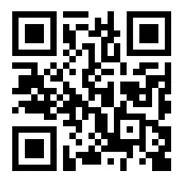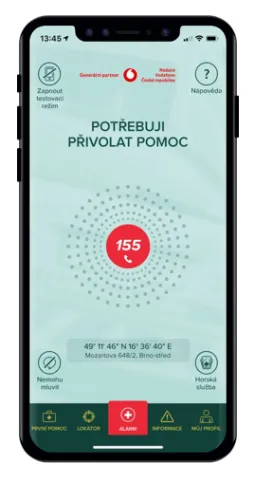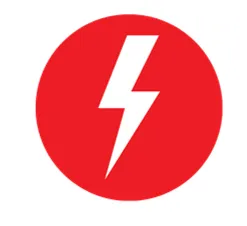
OSH for foreigners
FIRST AID IN THE WORKPLACE
What is first aid?
First aid is immediate assistance given to an injured or sick person before they come into contact with a professional health professional. It is a set of actions aimed at saving life, reducing complications of an injury or sudden health collapse and reducing the pain of the affected. First aid can be effectively provided even by a layperson without medical training and special equipment.
How to provide first aid to an unconscious person?
The video was created as part of the EU-funded project Safety training for practical life, Erasmus+ 2022-2-SK01-KA210-ADU-000095920. Subtitles in English, Ukrainian, Polish, Romanian and Bulgarian were added to the videos. On YouTube, you can turn it on in video settings via the ![]()
Causes of the condition:
- non-injury-related (alcohol poisoning, hypoglycemia in diabetics, epileptic seizure, stroke);
- injury-related (concussion, contusion or damage to the skull and brain).
Basic first aid procedure – unconsciousness:
- SAFETY. Check the surroundings – prioritize your own safety. Beware of possible sources of injury – sharp objects, shards, dangerous persons, vehicles, electricity, etc.
- ADDRESS Loudly address the person or shake their shoulders.
- HEAD TILT. Tilt the affected person's head (two fingers under the chin, edge of your hand on the forehead). This opens the airways, the tongue lifts away from the palate.
- BREATHING CHECK. Check the breathing: Put your right ear to the affected person's mouth and nose, watching the chest. Can you hear inhalation and exhalation? Can you feel the exhaled air? Is their chest rising? Yes → the person is breathing, continue with the next steps.
- STRAIGHTENING + POCKETS. Straighten the affected person’s limbs. Check the pockets. Remove keys to prevent the person from getting hurt or lying uncomfortably on their side. Look for diabetic pens, glucose etc. – possible indications that the person is diabetic. Check the abdomen – this is where the insulin pump is most often placed.
- PLACING IN THE RECOVERY POSITION. Place the hand that is closer at a right angle. → Grab the farther hand by the fingers and bring it to the person's face. → Bend the farther leg at the knee joint and hold it. → By pulling on the knee, turn the person towards you onto their side.
- REGULAR BREATHING CHECKS. Make sure the head is tilted and the person is still breathing. Check breathing at least once a minute (by placing one hand on the stomach → is it rising? Other hand in front of the mouth → can I feel exhaled air?) If the person stops breathing, roll them onto their back immediately and start performing CPR.
- EMERGENCY CALL. Call 155.
! Be cautious of traumatic unconsciousness. In traffic accidents, falls from heights, and high-impact injuries ("3 Vs" – steering wheel, height, serious injury to the head, spine, or pelvis) do not place the person in the recovery position. Fix the head with both hands on the ground/on a pad!
How to provide first aid to a person with massive bleeding?
The video was created as part of the EU-funded project Safety training for practical life, Erasmus+ 2022-2-SK01-KA210-ADU-000095920. Subtitles in English, Ukrainian, Polish, Romanian and Bulgarian were added to the videos. On YouTube, you can turn it on in video settings via the symbol
Causes of the condition:
- traffic accidents;
- serious injuries at the workplace (injuries during work with saws, circular saws or machinery);
- working with sharp objects;
- amputation;
- open fractures.
Basic first aid procedure – massive bleeding:
- SAFETY. Check your surroundings – prioritize your own safety (turn off the machine, remove sharp objects)! Use disposable gloves or an alternative (plastic bag). Blood is potentially infectious material, protect yourself from the risk of infection, especially with an unknown person!
- PRESSURE ON THE WOUND WITH THEIR OWN FINGERS/HAND. Before putting on gloves/bringing a first aid kit, ask the injured person to press on the wound with their own fingers/hand (depending on the size of the wound).
- PRESSURE TO THE WOUND. Press directly into the wound with your hand or fingers, apply pressure!
- PRESSURE BANDAGE. Take a bandage from the first aid kit – ideally one classic hydrophilic and the other elastic. Place one unrolled bandage directly into the wound and create pressure by wrapping with the other. If blood leaks through the bandage, press firmly over the bandage with your hands.
- SHOCK PREVENTION MEASURES. Always treat the affected person in a sitting or lying position. If the person feels cold, cover them with an isothermal foil from the first aid kit or with a blanket/jacket/sweatshirt.
- CALLING EMERGENCY LINE. If the person is pale, weak, tired, or nauseous, call emergency number 155.
How to provide first aid to a person with a fracture?
The video was created as part of the EU-funded project Safety training for practical life, Erasmus+ 2022-2-SK01-KA210-ADU-000095920. Subtitles in English, Ukrainian, Polish, Romanian and Bulgarian were added to the videos. On YouTube, you can turn it on in video settings via the symbol
Causes of the condition:
- falls;
- impacts;
- traffic accidents;
- pressure on bones, joints.
Consequences are open or closed fractures, dislocations.
Basic first aid procedure – fractures:
- SAFETY. Check the surroundings – take care of your own safety!
- FIXATION OF THE LIMB. Stabilize the injured limb using the other limb. If available, create a sling from a triangular scarf.
- FIXATION OF HEAD, SPINE, PELVIS INJURIES. Apply in traffic accidents, falls from heights, and high-energy traumas ("3 Vs" – steering wheel, height, serious injury). Do not allow the injured person to move, stand or turn their head. Do not place the person in the recovery position (on their side)! Fix the head on the ground/pad with both hands, communicate with the affected person and call 155.
How to provide first aid for burns?
The video was created as part of the EU-funded project Safety training for practical life, Erasmus+ 2022-2-SK01-KA210-ADU-000095920. Subtitles in English, Ukrainian, Polish, Romanian and Bulgarian were added to the videos. On YouTube, you can turn it on in video settings via the symbol
Causes of the condition:
- fire;
- hot liquids, hot objects;
- steam;
- chemicals and cleaning agents;
- sunlight, radiation, and electric current.
Basic first aid procedure – burns:
- SAFETY. Check the surroundings – prioritize your own safety (remove the heat source)! If available, use disposable gloves or an alternative.
- COOLING. Cool the affected area with clean cold tap water for 20 minutes or until cooling brings relief.
- CLOTHING, RINGS, BRACELETS. Never tear off stuck/fused clothing! Remove rings/watches/chains under cold water. Don't pierce the blisters!
- COVERING. Once cooled enough, cover the burn with non-stick film (e.g. food wrap) and seek medical attention.
- EMERGENCY CALL. Call emergency line 155 for extensive, deep burns or when the affected person is going into shock (cold, sweating, pallor).
How to provide first aid in a traffic accident?
The video was created as part of the EU-funded project Safety training for practical life, Erasmus+ 2022-2-SK01-KA210-ADU-000095920. Subtitles in English, Ukrainian, Polish, Romanian and Bulgarian were added to the videos. On YouTube, you can turn it on in video settings via the symbol
Basic first aid procedure – traffic accident:
- SAFETY. Stop the vehicle in a safe place. Put the handbrake on. Turn on the hazard lights. Remove the keys from the ignition / turn off the engine. Put on a high-visibility vest. Bring a first aid kit and a cell phone. Look around before you get out of the car. Unfold and place a warning triangle (at least 50 m behind the crashed vehicle, on the highway at least 100 m)
- ASSESSING THE SITUATION. Find out the situation at the scene. Is the car sparking? Is there a risk of fire? How many injured at the scene?
- EMERGENCY CALL. Call emergency number 112.
- PRIORITIZATION. In case there are multiple injured people, provide first aid first to those who are bleeding massively.
- Only remove injured people from the car if there is a danger (e.g. the car catching fire) or if the injured person is not breathing and CPR needs to be initiated.
- Provide assistance and support until emergency medical services arrive.
How to provide first aid to a person choking on a foreign object?
The video was created as part of the EU-funded project Safety training for practical life, Erasmus+ 2022-2-SK01-KA210-ADU-000095920. Subtitles in English, Ukrainian, Polish, Romanian and Bulgarian were added to the videos. On YouTube, you can turn it on in video settings via the symbol
Basic first aid procedure – choking:
- SAFETY. Check the surroundings – take care of your own safety!
- HIT BETWEEN THE SHOULDERS. Hit the affected person 5 times between the shoulder blades.
- ABDOMINAL THRUSTS. Stand behind the affected person. Press the person's abdomen 5 times with a fist in the navel area (towards yourself and upwards). Abdominal thrusts should not be given to children under one year of age or pregnant women.
- If the foreign object has come out of the airway, sit the person down and keep checking them.
- If the foreign object has not come out and the affected person becomes unconscious and is not breathing, start performing CPR and call emergency number 155.
Am I required to provide first aid to another person?
Yes.
Everyone is obliged to provide first aid to a person who is in danger of death or shows signs of serious health issues or other serious illness, provided that this does not put themselves or someone else in danger.
Failure to provide first aid may constitute a criminal offense in the Czech Republic. Everyone should be able to provide basic first aid to another person. Life-threatening conditions can be encountered not only at work, but also in private life.
When should you call emergency medical services?
- in life-threatening conditions (the affected person is not breathing, unconscious, bleeding profusely);
- for severe head, spine, chest, abdominal, pelvic injuries;
- for road accidents involving injury of persons;
- in sudden collapses (e.g., acute myocardial infarction, stroke, severe allergic reactions);
- for severe or extensive burns;
- when the affected person is unable to walk or suffering from excruciating pain.
What is the phone number for emergency medical services in the Czech Republic?
Emergency medical services = 155 → Call if you only need medical assistance.
Emergency line = 112 → Call in situations requiring multiple integrated rescue system components (e.g., medical services, firefighters, police), such as car accidents, industrial disasters, or mass casualties.
Calling emergency lines is free of charge.
I don’t speak Czech. How can I communicate with the emergency line operator?
If there is another person who speaks Czech on site, it is preferable for them to make the call. If this option is not available and you are alone, it is preferable to contact the emergency line 112, as operators also speak international foreign languages (usually English or German).
Is there a mobile application for calling emergency medical services in the Czech Republic?
Yes, the Záchranka application.
The application offers:
- entering the exact GPS location;
- emergency call at the touch of a button;
- the “I cannot speak” function with sending a data SMS;
- a map of automated external defibrillators (AED) in the Czech Republic;
- first aid information on your mobile phone;
- app available for iPhone, Android, Huawei (download via QR code).


The source of photos: https://www.zachrankaapp.cz/
What information should be provided to the emergency line operator and in what order?
After introducing yourself, provide the operator with the following:
WHERE?
Please indicate where the event occurred in the following order:
- city/municipality;
- street, number, entrance, floor;
- landmarks (e.g. numbers on lighting poles, railroad crossing numbers, kilometer markers on highways).
WHAT?
State what happened to the affected:
- conscious/unconscious;
- breathing / not breathing;
- bleeding / not bleeding;
- other symptoms.
WHO?
Please provide details of the affected person:
- age;
- gender;
- significant facts.
! Never hang up on an emergency call first. The operator stays on the line with you until paramedics arrive and provides you with instructions to administer first aid!
How to provide first aid to a person who is unconscious and not breathing?
Video:
The video was created as part of the EU-funded project Safety training for practical life, Erasmus+ 2022-2-SK01-KA210-ADU-000095920. Subtitles in English, Ukrainian, Polish, Romanian and Bulgarian were added to the videos. On YouTube, you can turn it on in video settings via the ![]()
Causes of the condition:
- cardiac (heart attack, heart damage, ventricular fibrillation);
- non-cardiac (drowning, choking, massive bleeding).
Basic first aid procedure – cardiopulmonary resuscitation (CPR):
- SAFETY. Check the surroundings – prioritize your own safety. Beware of possible sources of injury – sharp objects, shards, dangerous persons, vehicles, electricity, etc.
- ADDRESS Loudly address the person or shake their shoulders.
- HEAD TILT. Tilt the affected person’s head back (place one hand on the forehead and fingers of the other hand under the chin; tilt the head back and move the lower jaw forward). This opens the airways, the tongue lifts away from the palate.
- BREATHING CHECK. Check the breathing: Place your ear close to the affected person’s mouth and watch their chest. Can you hear inhalation and exhalation? Can you feel the exhaled air? Is their chest rising? If not → they are not breathing. Watch out for gasping (carp) breaths, the affected person is not breathing! Limit the breathing check to a maximum of 10 seconds.
- EMERGENCY CALL. Call 155. Use the speakerphone and start chest compressions simultaneously. Never hang up first.
- CHEST COMPRESSIONS. Perform chest compressions on firm surfaces (e.g. flat solid ground). Press in the center of the chest with both hands to a depth of 5–6 cm (using only the bottom of the lower hand’s palm). Rate of 100–120x compressions per minute.
- RESCUE BREATHS. Give 2 rescue breaths after 30 chest compressions. If performed correctly, the affected person’s chest will rise. You can use a resuscitation mask or a mask from the first aid kit. Do not administer rescue breaths if the person has vomited, has a bloody mouth, or if there is a risk of infection. In such cases, keep compressing the chest. You can also skip rescue breaths if you are untrained or unsure about performing them correctly. Perform continuous chest compressions.
- Continue CPR until emergency medical services arrive, alternate with another rescuer, or until your own complete physical exhaustion.
How to provide first aid to an unconscious person who is not breathing using an automated external defibrillator (AED)?
Video:
The video was created as part of the EU-funded project Safety training for practical life, Erasmus+ 2022-2-SK01-KA210-ADU-000095920. Subtitles in English, Ukrainian, Polish, Romanian and Bulgarian were added to the videos. On YouTube, you can turn it on in video settings via the ![]()


The source of photos: Safety training for practical life project, Erasmus+ 2022-2-SK01-KA210-ADU-000095920.
Automated external defibrillators (AEDs) are available in many places in the Czech Republic. See the map. An AED delivers a controlled electric shock (defibrillation), which can restore a normal heart rhythm. Using an AED within 3–5 minutes of sudden collapse increases the likelihood of restoring circulation by 50–75%.

The source of the map: https://www.zachrankaapp.cz/aed
Basic first aid procedure – cardiopulmonary resuscitation (CPR) with AED:
- SAFETY. Check the surroundings – prioritize your own safety. Beware of possible sources of injury – sharp objects, shards, dangerous persons, vehicles, electricity, etc.
- ADDRESS Loudly address the person or shake their shoulders.
- HEAD TILT. Tilt the affected person's head (two fingers under the chin, edge of your hand on the forehead). This opens the airways, the tongue lifts away from the palate.
- BREATHING CHECK. Check the breathing: Put your right ear to the affected person's mouth and nose, watching the chest. Can you hear inhalation and exhalation? Can you feel the exhaled air? Is their chest rising? If not → they are not breathing. Watch out for gasping (carp) breaths, the affected person is not breathing! Limit the breathing check to a maximum of 10 seconds.
- EMERGENCY CALL + BRINGING AED. Call 155. Use the speakerphone. The operator can announce that there is an AED nearby and communicate the code to open the box. Bring the AED or ask bystanders/others to bring it. Turn on the AED and follow its instructions.
- ATTACHING ELECTRODE. Remove clothing around the affected person's chest area. Attach the electrodes on bare skin. Make sure the person's chest is dry, or dry it. Hair needs to be shaved with a razor – included in the AED package. Attach electrodes as indicated on the pictograms on the electrodes: one on the upper right (below the collarbone) and one on the lower left (below the left pectoral muscle) – see picture. The electrodes must not cover the nipples!

The source of the image: Safety training for practical life project, Erasmus+ 2022-2-SK01-KA210-ADU-000095920.
- HEART RHYTHM ANALYSIS. The AED will say “Heart rhythm analysis”. Do not touch the affected person, the analysis could be compromised. Warn bystanders not to touch the affected person.
- RECOMMENDED SHOCK. If the AED recommends a shock, ensure no one is touching the affected person. Prevent others from touching the person verbally or with a gesture. Press the shock symbol.Obrázek

- CPR. The AED will instruct: Start CPR (resuscitation). Compress the chest and administer rescue breaths in a 30:2 ratio. If you are not administering rescue breaths, continue uninterrupted chest compressions.
- Continue CPR as directed by the AED until emergency medical services arrive.